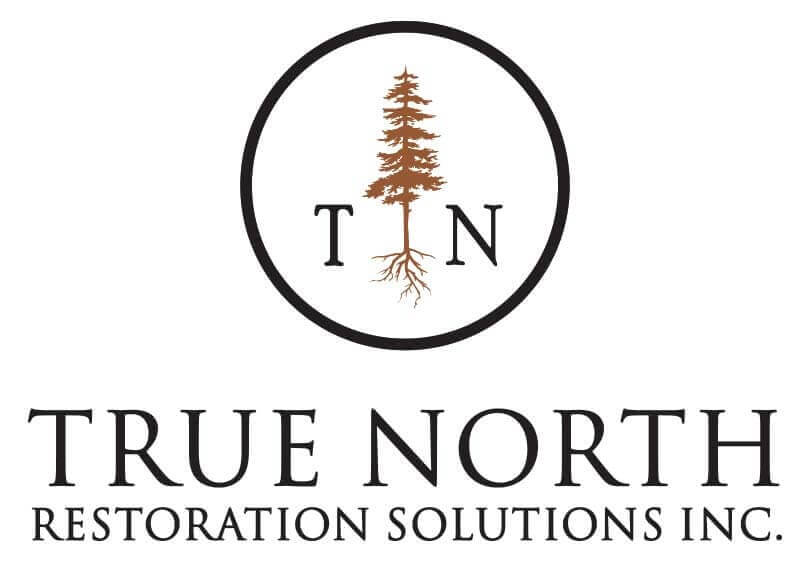Log Home Settling: Understanding How to Manage It
Log homes, with their rustic charm and natural beauty, have become increasingly popular. However, owning a log home comes with its unique challenges, one of the most significant being log home settling. This blog will delve into understanding the topic better and provide effective strategies to manage it. True North Restoration, with over 30 years of experience, is here to help you maintain the integrity and beauty of your log home.
What is Log Home Settling?
The Natural Process of Settling
Log home settling is a natural process that occurs as the logs in your home dry and shrink over time. This process can cause gaps, cracks, and structural shifts, which, if not managed properly, can lead to significant issues.
Factors Influencing Settling
Several factors influence the rate and extent of log home settling:
- Wood Species: Different wood species dry and shrink at different rates.
- Moisture Content: The initial moisture content of the logs affects how much they will shrink.
- Construction Techniques: The methods used during construction, such as how the logs are cut and assembled, can impact settling.
- Climate: Variations in temperature and humidity can accelerate or decelerate the settling process.
Signs of Log Home Settling
Common Indicators
Identifying the signs of settling early can help you address issues before they become severe. Here are some common indicators:
- Visible Gaps: Gaps between logs or around windows and doors.
- Cracks in Logs: Splits or cracks in the logs themselves.
- Uneven Floors: Floors that are no longer level.
- Doors and Windows Sticking: Difficulty in opening or closing doors and windows.
Structural Shifts
In more advanced cases, you may notice structural shifts, such as:
- Sagging Rooflines: A roofline that appears to sag or dip.
- Wall Movement: Walls that seem to lean or bow outward.
Managing Log Home Settling
Regular Inspections
Regular inspections are crucial to managing log home settling. Schedule annual inspections with a professional restoration company like True North Restoration to assess the condition of your home and identify any settling issues early.
Maintenance Practices
Implementing good maintenance practices can help mitigate the effects of settling:
- Sealant Application: Regularly applying sealants to your logs can help reduce moisture penetration and slow down the drying process.
- Caulking Gaps: Use caulking to fill in gaps between logs and around windows and doors to prevent drafts and water intrusion.
- Log Adjustments: Adjust logs as necessary to ensure they remain properly aligned and secured.
Professional Restoration Services
When settling issues become significant, professional restoration services are essential. True North Restoration offers comprehensive services to address log home settling, including:
- Log Replacement: Replacing severely damaged or compromised logs.
- Structural Reinforcement: Adding supports and reinforcements to maintain structural integrity.
- Restoration and Finishing: Restoring the appearance of your log home to its original beauty.
Preventive Measures for This
1. Proper Construction Techniques
If you are in the planning stages of building a log home, using proper construction techniques can help minimize future settling issues. Work with experienced builders who understand the nuances of log home construction.
2. Controlled Drying
Ensuring that logs are properly dried before construction can significantly reduce the extent of settling. Controlled drying methods, such as kiln-drying, can help achieve this.
3. Seasonal Adjustments
Be mindful of seasonal changes and how they might affect your log home. During extreme weather conditions, take extra precautions to protect your home from excessive moisture or temperature fluctuations.
FAQ: Log Home Settling
How long does log home settling last?
Log home settling can continue for several years, typically up to five years after construction. However, the most significant changes usually occur within the first two years.
Can log home settling be prevented?
While settling is a natural process that cannot be entirely prevented, proper construction techniques, regular maintenance, and timely restoration can minimize its impact.
How often should I inspect my log home for these issues?
It’s recommended to inspect your log home at least once a year. Regular inspections help identify and address settling issues before they become severe.
What should I do if I notice signs of settling?
If you notice signs of settling, such as gaps, cracks, or structural shifts, contact a professional restoration company like True North Restoration. They can assess the situation and provide appropriate solutions.
Is this covered by insurance?
Insurance coverage for this varies by policy. It’s important to review your insurance policy and discuss with your provider what is covered in terms of natural settling and related damages.
About True North Restoration
True North Restoration is Ontario’s leading log home restoration company, boasting over 30 years of experience in the industry. Our team of skilled professionals is dedicated to preserving the beauty and integrity of your log home. We offer a comprehensive range of services, from routine maintenance and inspections to extensive restoration projects. Trust True North Restoration to manage your log home settling issues with expertise and care. See our GMB to see where we service.
